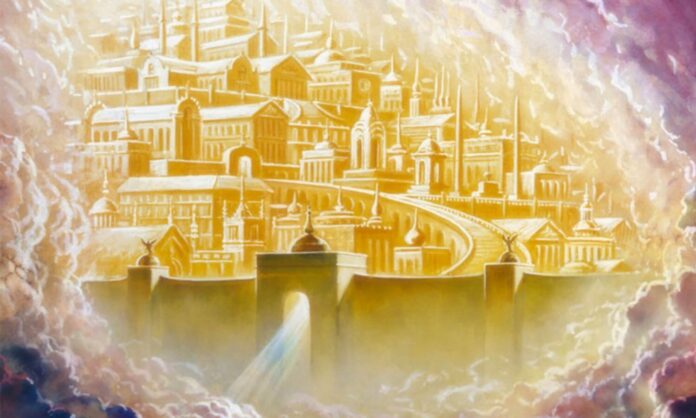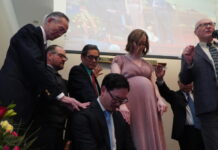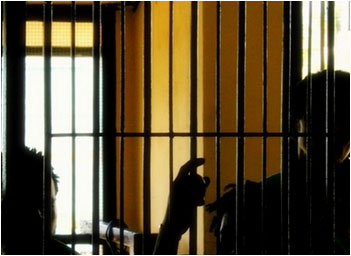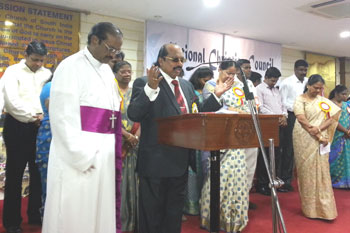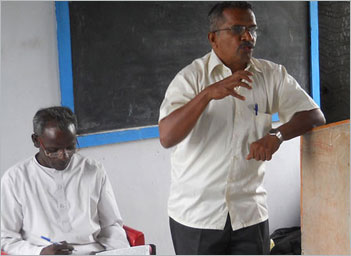By Mark Creech
FEW books occupy as prominent a place in literary history as Charles Dickens,’ “A Tale of Two Cities.” It is a masterpiece of storytelling, social commentary, and moral insight.
In Dickens’ novel, two iconic cities, London and Paris, serve as metaphors for utterly different societies during the tumultuous era of the French Revolution. Dickens depicts London as a stable and orderly culture governed by established institutions and traditions. Paris, on the other hand, is characterized by upheaval and revolution.
Dickens also contrasts characters in the book. Sydney Carton is initially portrayed as an English lawyer who is dissolute and cynical, but ultimately experiences a profound transformation and performs a selfless act of sacrifice to save another. His nobility and willingness to surrender his own life for the sake of others stands in stark contrast to the decadence and oppression of the French aristocracy represented in the novel. Carton becomes a figure of redemption and selflessness, the aristocracy symbolizes corruption, privilege, and the exploitation of others.
As we look to Revelation chapter 21 verses 9 through 27, there is found another narrative of contrasting cities – a divine revelation of the heavenly city, the New Jerusalem, juxtaposed with the fallen city of Babylon. And just as Dickens contrasts the nobility and sacrifice of Sydney Carton with the self-indulgence of the French aristocracy, Revelation presents an unadorned juxtaposition between the redeemed inhabitants of the New Jerusalem, who bask in the blessed glory and presence of God, and the inhabitants of Babylon, who reject the Lord’s sovereignty and are filled with wickedness.
In both of these narratives, there is seen the timeless struggle between good and evil, light and darkness, justice and oppression. Conversely, in Dickens’ tale, we are called to judge rightly and choose wisely – to embrace the eternal truths of redemption and righteousness embodied in the New Jerusalem, while rejecting the allure of Babylon’s fleeting earthly pleasures and empty promises.
What do the Scriptures say?
9 Then one of the seven angels who held the seven bowls containing the seven last plagues came and said to me, “Come with me! I will show you the bride, the wife of the Lamb.”
10 So he took me in the Spirit to a great, high mountain, and he showed me the holy city, Jerusalem, descending out of heaven from God. 11 It shone with the glory of God and sparkled like a precious stone—like jasper as clear as crystal. 12 The city wall was broad and high, with twelve gates guarded by twelve angels. And the names of the twelve tribes of Israel were written on the gates. 13 There were three gates on each side—east, north, south, and west. 14 The wall of the city had twelve foundation stones, and on them were written the names of the twelve apostles of the Lamb.
15 The angel who talked to me held in his hand a gold measuring stick to measure the city, its gates, and its wall. 16 When he measured it, he found it was a square, as wide as it was long. In fact, its length and width and height were each 1,400 miles. 17 Then he measured the walls and found them to be 216 feet thick(according to the human standard used by the angel).
18 The wall was made of jasper, and the city was pure gold, as clear as glass. 19 The wall of the city was built on foundation stones inlaid with twelve precious stones: the first was jasper, the second sapphire, the third agate, the fourth emerald, 20 the fifth onyx, the sixth carnelian, the seventh chrysolite, the eighth beryl, the ninth topaz, the tenth chrysoprase, the eleventh jacinth, the twelfth amethyst.
21 The twelve gates were made of pearls—each gate from a single pearl! And the main street was pure gold, as clear as glass.
22 I saw no temple in the city, for the Lord God Almighty and the Lamb are its temple. 23 And the city has no need of sun or moon, for the glory of God illuminates the city, and the Lamb is its light. 24 The nations will walk in its light, and the kings of the world will enter the city in all their glory. 25 Its gates will never be closed at the end of the day because there is no night there. 26 And all the nations will bring their glory and honor into the city. 27 Nothing evil[ will be allowed to enter, nor anyone who practices shameful idolatry and dishonesty—but only those whose names are written in the Lamb’s Book of Life (Revelation 21:9-27).
The angel who speaks to the apostle John is apparently one of the angels who had carried out God’s judgment on the ungodly via the seven bowls, and invited the seer to see the “great prostitute.” Now one of the angels, perhaps the same one as before, invites John to see the blissfulness of the redeemed – the pure Bride of Christ.
The heavenly city, the New Jerusalem, is referenced as the “wife of the Lamb.” This doesn’t mean the city is not a literal place, because it is the residence of all the saved. What it does mean, however, is that the city is permanently associated with its inhabitants, the saints of every era who took God at his Word and were “confidently looking forward to a city with eternal foundations, a city designed and built by God” (Hebrews 11:10). These people are considered fully united with their Savior, the Lord Jesus, in a perfect eternal relationship, characterized by moral spotlessness, and tender affection.
J. Dwight Pentecost, in his book, “Things to Come,” quotes from “Theocratic Kingdom,” by G.N.H. Peters, which reads:
“In the usage of the East when a king entered his capitol to rule therefrom, or a prince ascended the throne, it was represented under the figure of a marriage, i.e. he was wedded, intimately and permanently united to the city, or throne, or people…there is no impropriety but rather eminent fitness that the union of the King of Kings with his metropolitan city should be designated under the same figure, implying the most intimate and permanent relationship. Thus, the figure of marriage, which to many is the main objection to a literal city, serves rather to indicate it.”
The angel then lifts John “in the Spirit, to a great, high mountain” where he can get a good view of the heavenly city. When the apostle sees it, he says he witnessed it descending out of heaven from God.
No person is ever able to see and comprehend what is heavenly unless they are first lifted by the Spirit to a higher spiritual plane. Jesus said, “I tell you the truth, unless you are born again [or born from above], you cannot see the Kingdom of God” (John 3:3). Real conversion and the ability to discern what is truly spiritual is wrought by a work of God’s Spirit on the human heart.
Moreover, the apostle says that the New Jerusalem descended out of heaven from God, which is another way of making the same point as the first. That which is heavenly cannot be achieved through good works (Ephesians 2:8-9), human wisdom (I Corinthians 1:20-21), or worshiping anything other than the one true God (Romans 1:21-23). God’s favor and his heavenly treasures, figuratively and literally, cannot be merited by climbing a great high mountain of spiritual challenges. Instead, the Spirit of God through simple faith lifts the believer in Christ to new and glorious eternal heights, and God in his grace and mercy descends with his unspeakable treasures.
The late renowned evangelist, Dr. Billy Graham once encapsulated this central tenet of Christianity, saying: “In every other religion, the human is reaching up to the divine, but in Christianity, the divine came down to the human.”
The description of the heavenly city is out of this world – no pun intended. The most beautiful cities in the world today cannot compare.
Paris, France, is celebrated for its iconic landmarks such as the Eiffel Tower, Notre-Dame Cathedral, and Louvre Museum, as well as its charming boulevards, elegant architecture, and romantic ambiance. Florence, Italy is home to some of the world’s most iconic art and architecture. Nestled between the iconic Table Mountain and the glistening Atlantic Ocean, is Cape Town, South Africa, which is admired for its natural beauty, vibrant culture, and diverse attractions. Who can forget Rio de Janeiro, Brazil, considered one of the most visually stunning cities in the world, with its dramatic mountains, golden beaches, and lush rainforests? Earthly cities such as these may evoke a sense of wonder and veneration, but they are only finite and subject to decay, reflecting the imperfections and limitations of human civilization.
The New Jerusalem, the eternal city of God, however, transcends earthly beauty and human comprehension, radiating with the glory of God himself. Revelation tells us that the heavenly city is brilliant like a precious jewel, clear as crystal. It gleams with a resplendent light.
Its walls rise majestically, towering into the celestial expanse, constructed of jasper, 216 feet thick but pure and translucent, symbolizing the impenetrable strength and integrity of the divine presence which lovingly enfolds God’s redeemed people.
Each stone that makes up the wall shimmers with ethereal hues of jasper, sapphire, agate, emerald, onyx, carnelian, chrysolite, beryl, topaz, chrysoprase, jacinth, and amethyst, casting a kaleidoscope of colors that dance in the light of God’s shekinah glory. Upon each foundation stone of the walls are written the names of the twelve apostles, who relinquished everything for their Master.
The twelve gates of the city stand as the portals of entry, and each is guarded by an angel. They are fashioned from a single pearl, which represents the priceless value of entrance into God’s holy presence and his forever Kingdom. The twelve tribes of Israel are written on these gates.
Daymond R. Duck and Larry Richards in “The Book of Revelation: The Smart Guide to the Bible Series,” quote Randall Price, who says:
“The walls of the New Jerusalem reveal that Israel and the church share equally in the inheritance of the city. The names of the 12 tribes of Israel are inscribed on the 12 gates. The names of the 12 apostles are on its 12 foundation stones (Revelation 21:12-14). Even though these are all Jewish, they still represent the dispensations of Israel and the Church (as in Hebrews 12:23).”
The main street of the heavenly city is paved with pure gold, so refined that it’s as pure as glass. Today people will fight and steal for a piece of God, but in God’s city, people’s feet tread pavement with a higher grade of gold than the world has ever seen.
The angel who showed the apostle John the New Jerusalem, measured the holy city, its gates, and its wall. The measurement of the city revealed it was like a square, or some say it was like a cube. Still, some think it was more like a pyramid, but it’s difficult to prove either way.
Duck and Richards argue the Holy of Holies in the Old Testament tabernacle and the temple in Jerusalem were cubes, “so it seems that the shape of God’s temporary residence among the Jews will be the shape of God’s permanent residence among his people.”
One thing is for certain, the heavenly city is colossal. Calculating the dimensions given by today’s standards of measuring, the city is approximately 1500 miles long, 1500 miles wide, and 1500 miles high. Los Angeles, California, and Chicago, Illinois, are approximately 1500 miles apart. The International Space Station is only about 260 miles above the earth. Obviously, this covers a tremendous amount of territory and is indicative of the millions of believers who will live in the New Jerusalem.
The Revelator notes that there is something conspicuously missing in the heavenly city – something we might not expect. He says that there is no temple.
Temples have always held great importance in ancient cultures worldwide. Similarly, churches held a central place in medieval Western culture. In early America, a community would often build the church prominently central to the town or city, demonstrating its import to the soul of its people. A city without a temple might be perceived to be a godless place.
So, when the Bible says that there is no temple in the heavenly city, it doesn’t mean there won’t be worship there. It means there won’t be a temple like those on earth, which sometimes descend from being sacred places to places of superstition and sectarianism.
There’s a humorous story that illustrates this point.
A Baptist was stranded on a desert island for years before finally being rescued. When asked about the three huts he had built during his time there, he explained that one hut was his home, and the second hut was the Baptist church where he faithfully worshipped and prayed. Curious, his rescuers inquired about the purpose of the third hut. The Baptist replied, “Oh, that’s the Baptist church where I used to attend before there was a disagreement and a split!”
The reason given for the absence of a temple in heaven is because the Lord God Almighty and the Lamb are its temple. In other words, God, the Father, and his Son, Jesus Christ, aren’t just the focus of worship; they’re the very essence of it. Everyone in New Jerusalem experiences the full realization of what Christ was telling the Samaritan woman when he said: “For God is Spirit, so those who worship him must worship in spirit and in truth” (John 4:24).
So, in heaven worship reaches its fullest expression. “No temple” means “everywhere is a temple” – worship is in every place, in every circumstance, and for all eternity.
We should model our earthly worship after the heavenly worship. Not that we should do away with going to church. Church buildings still serve their purpose on this side of the divide. But we should not limit our worship to a building, or a set form of prayers, rituals, and denominational polities. Acceptable worship requires speaking to God with a clean heart, praising him, honoring him, thanking him, and obeying him in everything.
Conventional worship, compared to the worship of eternity, is as inadequate as the light from a flashlight directed at the midday sun. In the heavenly city, our worship is perfected in holiness.
There is no sun or moon in the heavenly city either. John Phillips in “Exploring Revelation” writes, “The light that blazed from the face of Jesus on the mount of transfiguration will be the sole illumination in the heavenly Jerusalem. We shall walk in the light of his countenance.”
The nations will walk in Christ’s light, and the rulers of the world will enter into this holy place. As Isaiah prophesied, “All nations will come to your light; mighty kings will come to see your radiance” (Isaiah 60:3).
On that day, there will be no more kings to dispute the Lord’s way. No more kings like King Nebuchadnezzar of Babylon, King Belshazzar of Babylon, the Pharaoh of Egypt, King Ahab of Israel, Herod Antipas of Rome, and Pontius Pilate of Rome. In more modern times, there will be no more rulers like Adolph Hitler of Germany, Joseph Stalin of the Soviet Union, Saddam Hussein of Iraq, Kim Jon-Un of North Korea, or Xi Jinping of China.
Every nation, every ruler, shall willingly and humbly bow in obeisance to the King of kings and Lord of lords.
The gates of the New Jerusalem will never be closed because there is no night there. There will be no threat. And nothing evil, nor any sinful practice will ever enter into that city – only those saved by the precious blood of the Lamb will bask in its countless wonders.
How interesting! The city of man, Babylon, also known as the great spiritual harlot, where the worship of all gods but the one and only true God, is plunged into darkness (Revelation 16:10). The heavenly city where God only is worshiped is brilliant with the incomparable light of his magnificence. Babylon is drunk with the blood of the saints she’s martyred, but she is destroyed catastrophically and completely by the judgment of God (Revelation 18:9-24), and ultimately the saints live in perfect peace and safety forever in the New Jerusalem. Babylon is the epitome of man’s pursuit of worldly riches, honor, and glory. In the heavenly city, however, precious stones and gold are as common as building materials, great honor belongs to those who honored the Lord, and total triumph is reserved for those who can go into the heavenly city.
To which city is your citizenship, Babylon or the New Jerusalem?
The writer is the the executive director of Christian Action League. The article was first published here.



